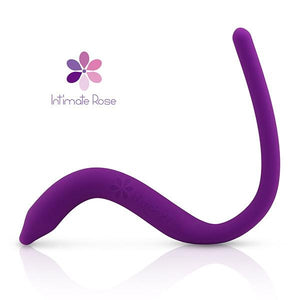Vaginismus Symptoms & Treatment
What is Vaginismus ?
Vaginismus is a condition in which there's involuntary contraction of the vaginal muscles, leading to tightness and discomfort. This often results in a range of physical symptoms, including pain, burning sensations, cramping, potential bleeding, and muscle spasms, which can make vaginal penetration challenging or even impossible. Additionally, this condition can have significant psychological impacts. Women experiencing vaginismus may face fear and anxiety around sexual activities, leading to avoidance of not only intercourse but also potentially other activities involving vaginal contact. They might develop protective behaviours or coping strategies to manage their symptoms. This condition can affect relationships, self-esteem, and overall quality of life, making support and understanding from healthcare providers and partners crucial for managing its impacts.
Causes of Vaginismus:
The causes of vaginismus can vary and are often complex. They may include:
-
Psychological Factors: Emotional or psychological factors can play a significant role in vaginismus. Past traumatic experiences, such as sexual abuse or painful medical procedures, can contribute to the development of vaginismus. Anxiety, fear of pain, negative attitudes towards sex, or relationship issues can also trigger or exacerbate the condition.
-
Fear of Pain or Penetration: Fear of pain during intercourse or anticipation of discomfort can lead to involuntary muscle contractions and tightening of the vaginal muscles, contributing to vaginismus. This fear can be influenced by cultural, religious, or societal factors, as well as previous painful sexual experiences.
-
Relationship Issues: Difficulties within a relationship, such as poor communication, lack of emotional intimacy, or unresolved conflicts, can contribute to vaginismus. Stress or tension between partners can affect a woman's ability to relax during sexual activity, leading to vaginal muscle tightness.
-
Physical Factors: While rare, physical causes such as infections, hormonal imbalances, or structural abnormalities in the genital area can contribute to secondary vaginismus. It's important to rule out any underlying medical conditions through appropriate medical evaluations.
-
Learned behaviour: In some cases, vaginismus can be a learned behaviour. If a woman has experienced pain or discomfort during previous attempts at intercourse, the body may develop a reflexive response of tightening the vaginal muscles in anticipation of pain, even when the pain is no longer present.
The Difference between Vulvodynia and Vaginismus
When exploring the complexities of women's pelvic health, it's important to understand the distinct yet sometimes related conditions of vulvodynia and vaginismus. While vulvodynia is characterized by chronic vulvar pain without an apparent cause, vaginismus involves involuntary muscle spasms that make vaginal penetration difficult or painful. Interestingly, research has shown that vulvodynia is often misdiagnosed as vaginismus, highlighting the need for careful and precise diagnosis in these conditions. This misdiagnosis can lead to inappropriate treatments, emphasizing the importance of distinguishing between the two for effective management and care. Understanding the nuances of each condition can empower women to seek accurate diagnoses and appropriate treatments, ensuring a better quality of life and health outcomes.
At Home Treatment for Vaginismus
Dilators for Vaginismus

Treatment for vaginismus typically involves a multidisciplinary approach. Pelvic physical therapy, which includes dilator therapy, can help address the physical component of the condition. counselling and therapy, including behavioural therapy (CBT) and psychosexual therapy, can address the psychological and emotional aspects of vaginismus. The specific treatment approach depends on the individual's needs and goals, and a healthcare provider can provide guidance and support throughout the process.
Pelvic Wands for Vaginismus

The Intimate Rose Pelvic Wand, is an innovative tool designed specifically for alleviating pelvic pain. This device targets both trigger points and tender points found in the pelvic floor muscles, which are common in conditions like vaginismus. Trigger points are hyperirritable spots in muscles, often felt as tight bands or "knots" that are painful when pressed, and can cause pain in other areas. Tender points, distinct from trigger points, are areas in muscles, muscle-tendon junctions, or other soft tissues that become highly sensitive, often associated with chronic pelvic pain disorders such as endometriosis. The Intimate Rose Pelvic Wand is expertly shaped to reach and relieve these sensitive areas, offering targeted pain relief.
Breathing Exercises for Vaginismus and Vaginal Pain
-
Set Up:
- Find a comfortable lying-down position, placing pillows or a bolster under the knees to support the lower back.
- Place one hand on the chest bone and the other on the stomach.
-
Diaphragmatic Breathing:
- Breathe in slowly and deeply through the nose, allowing the stomach to rise while keeping the chest still.
- Exhale gently through the mouth, allowing the stomach to fall.
- Focus on the rising and falling sensation of the stomach as you breathe in and out.
- Take slow, deliberate breaths and let go of any distracting thoughts or disruptions.
- Visualize tension being released from your body as you relax.
-
Release Tension in the Feet:
- Focus your attention on your feet.
- Maintain the breathing pattern and clench your toes on both feet as hard as you can for 5 seconds.
- Relax the toes completely.
- Repeat, clenching the toes at 50% effort for 5 seconds, then relax.
- Notice the difference in sensation between clenched and relaxed states.
-
Release Tension in the Gluteal Muscles (Buttocks):
- Maintain the breathing pattern and clench your buttocks together as hard as you can for 5 seconds.
- Relax the muscles completely.
- Repeat, clenching the buttocks at 50% effort for 5 seconds, then relax.
- Observe the difference in sensation between clenched and relaxed states.
-
Release Tension in the Pelvic Floor Muscles:
- Maintain the breathing pattern.
- Contract your pelvic floor muscles as if you were shutting off the flow of urine, clenching as hard as you can for 5 seconds.
- Relax the muscles completely.
- Repeat, clenching the pelvic floor muscles at 50% effort for 5 seconds, then relax.
- Notice the difference in effort between clenched and relaxed states.
-
Release Tension in the Abdominal Muscles:
- Continue breathing deeply into the belly.
- Contract your abdominal muscles by pulling your belly button in toward your spine, holding for 5 seconds.
- Relax the muscles completely.
- Repeat, contracting the abdominal muscles at 50% effort by pulling the belly downward for 5 seconds, then relax.
- Notice the sensation of relaxation in the muscles after they have clenched and then relaxed.
-
Release Tension in the Shoulders, Neck, and Jaw:
- Maintain the breathing pattern.
- Slowly press your head back and lift your shoulders toward your ears, holding for 5 seconds.
- Relax the muscles completely.
- Repeat, pressing the head back and lifting the shoulders at 50% effort for 5 seconds, then relax.
- Notice the sensation of muscle relaxation.
-
Closing:
- Continue deep belly breathing for a few more minutes.
- Take note of the clenching patterns that may arise during times of stress, anxiety, or pain.
- Aim to gradually decrease the clenching pattern over time.
- With practice, your brain will become more aware of muscle tension and will learn to relax the muscles when they begin to clench.


